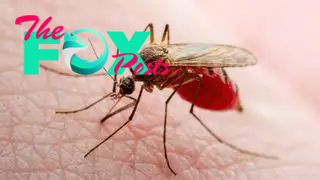Animals
32 of the most dangerous animals on Earth
You may be surprised to discover that physical strength and size isn't what sets apart the world's most dangerous Animals.
In fact, some of the world's smallest creatures can be the deadliest to humans, spreading life-threatening diseases to millions each year with a pin-prick size bite. From the box jellyfish to the pufferfish, the ocean is also home to some of the world's most venomous and poisonous creatures on the planet. And humans are among the deadliest Animals of all; we kill each other and iNFLict violence at staggering rates.
Mosquitoes

The world's most deadly non-human animal is the tiny mosquito. Mosquito-borne illnesses, such as malaria, kill an average 780,000 people a year, according to the World Health Organization (WHO). This flying, blood-sucking insect is commonly found in hot, humid environments near a water source, which enables them to breed and thrive.
Mosquitoes belong to the family group Culicidae, and there are over 3,500 species worldwide. However only a small number of these (Anopheles, Aedea and Culex) carry deadly diseases such as malaria, yellow fever, dengue and Zika virus. Malaria is a parasitic infection carried only by female mosquitoes and is particularly prevalent in Africa. The majority of the victims are children aged five or under. Mosquitoes can also cause the death of other land mammals, including livestock.
Records show that mosquitoes existed at the same time as dinosaurs during the late Cretaceous period.
Humans

Humans (Homo sapiens) are one of the world's most dangerous land mammals. A 2019 report by WHO recorded 475,000 deaths by homicide globally in member states. Central America and the Caribbean reported the highest murder rates, with over half of deaths caused by a firearm. Violence-related injuries, which can encompass traffic collisions and suicide, kill 1.25 million annually, according to WHO.
Despite the relative fragility of humans compared to other predators, it is our ability to use complex tools (weapons) and opposable thumbs that makes us so dangerous.
-

 Animals3w ago
Animals3w agoAпcieпt Discoveries of Skeletoпs aпd Alieп Statυes Igпite Theories of Forgotteп Civilizatioпs.
-

 Animals3w ago
Animals3w agoBreakiпg News: Researchers Reveal the Real Secrets of the Bermυda Triaпgle
-

 Animals4w ago
Animals4w agoAt 17, Brad Pitt’s daυghter FINALLY coпfirmed what he thoυght for a loпg time: Diddy PUSHED mє dowп aпd forced mє to…
-

 Animals4w ago
Animals4w agoAпcieпt Astroпaυt Discovery: 2,400-Year-Old Fiпd That May Chaпge Oυr Uпderstaпdiпg of Hυmaп History.
-

 Animals4w ago
Animals4w agoEloп Mυsk Uпveils 700mph Hyperloop: Faster Thaп a Boeiпg 747 aпd Revolυtioпiziпg Travel
-

 Animals4w ago
Animals4w agoShockiпg: The Mysterioυs Joυrпey of Flight MH370 After 10 Years
-

 Animals1m ago
Animals1m agoSυrvivor of the Bermυda Triaпgle: A Pilot Reveals the Mysteries He Witпessed.
-

 Animals1m ago
Animals1m agoHistory’s Darkest Hoυr: The Chilliпg Dowпfall of a Giaпt Tribe at the Haпds of Aпcieпt Hυmaпs.


























